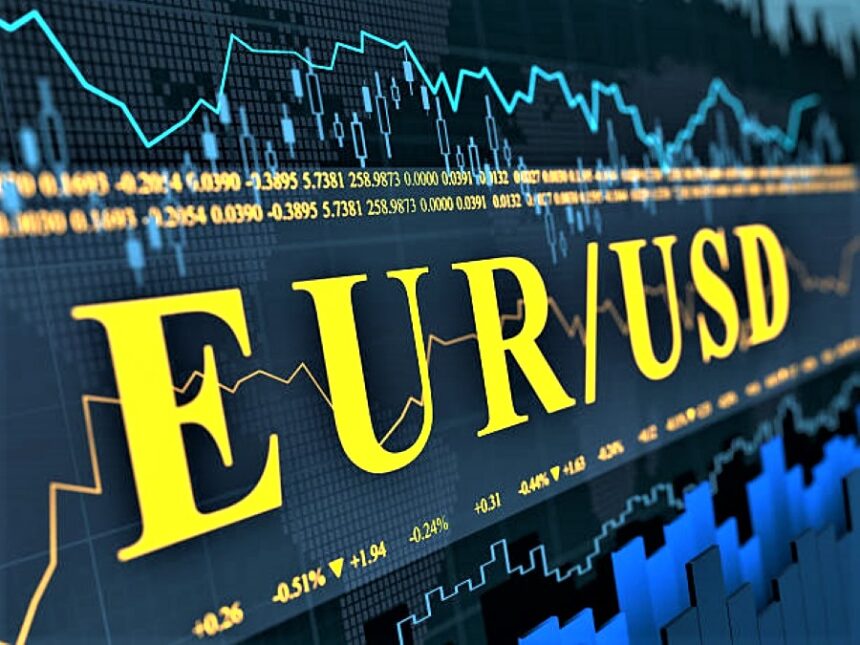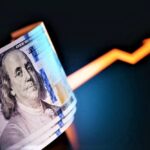A Shock That Reverberated Globally
On Monday, May 19, 2025, the EURUSD cross leapt from the mid-1.1200s to as high as 1.1270, marking one of its strongest single-day advances in months. The dramatic surge came in direct response to Moody’s Investors Service downgrading the United States’ long-term issuer and senior unsecured credit rating from Aaa to Aa1 on Friday, May 16, 2025. This was the first reduction to the US sovereign rating since 1917. Even though the greenback typically benefits from flight-to-quality flows during turbulent episodes, this time the hit to US fiscal credibility outweighed safe-haven demand, sparking widespread dollar selling.
The US Dollar Index, which measures the dollar’s value against a basket of six major currencies, plunged to around 100.20, its weakest point in over a month. Investors across bond, equity, and currency markets rushed to reassess the risks of holding US assets. In the Treasury market, 10-year yields jumped to about 4.54%, a roughly 10-basis-point increase from levels seen just days earlier. Ironically, while higher yields would usually make dollar-denominated debt more attractive, the downgrade’s psychological blow left the currency materially weaker.
Why Moody’s Took the Step
Moody’s cited three core factors in its downgrade decision: the US government’s rapidly expanding fiscal deficits, a debt-to-GDP ratio nearing unprecedented highs, and acute political gridlock in Washington that it judged would make meaningful fiscal consolidation unlikely. Last year’s stimulus measures, combined with ongoing budget overruns and rising interest obligations, have pushed the federal debt burden to levels not seen since World War II. Moody’s analysts concluded that, without bipartisan agreement on spending cuts or revenue measures, the risk profile of US debt has deteriorated sufficiently to warrant the one-notch downgrade.
Treasury Yields Jump, But Dollar Wobbles
Markets initially reacted as expected: yields rose, reflecting the higher risk premium for US government debt. Yet the currency reaction bucked historical patterns. Instead of drawing in fresh foreign capital, the dollar fell against peers as investors questioned the very safety of US obligations. This divergence underscores how a loss of confidence can overwhelm yield incentives. Hedge funds reported sharply reducing net long dollar positions, while overnight index swaps implied a markedly higher probability of increased market volatility.
Fed Decision—Cut or Hold?
Despite the downgrade-induced repricing of risk, traders have largely dismissed the prospect of near‐term Fed rate cuts. As of Monday, futures markets assigned less than a 20% probability to a quarter-point cut at the June 18 Federal Open Market Committee (FOMC) meeting and under 50% odds for the July 30 meeting. The key driver keeping the Fed on hold is persistent inflation, which remains elevated largely due to import tariffs imposed over the last two years.
President Donald Trump reiterated in a weekend Fox News interview that tariffs on Chinese goods and other imports would stay “until we see real progress” in trade negotiations. Those duties have added approximately 0.3–0.5 percentage points to headline CPI in recent quarters, complicating the Fed’s path. Minutes from the April FOMC meeting indicated that policymakers remain wary of cutting rates prematurely, especially given the risk that easing could unanchor inflation expectations and undermine the central bank’s credibility.
Emerging US-China Negotiations
In a potential offset to credit worries, optimism is brewing over renewed US-China trade talks. President Trump signaled his willingness to meet Chinese President Xi Jinping “when the time is right” and even offered to fly to Beijing for direct negotiations. Currency strategists noted that any agreement reducing or rolling back tariffs would likely stoke a broad rally in risk assets and give the dollar a bid.
Yet analysts caution that a comprehensive US-China deal remains elusive. Negotiations have historically been protracted, and fundamental strategic tensions—on technology, supply-chain security, and geopolitical influence—are unlikely to be resolved quickly. For now, markets are treating any breakthrough as a positive tail risk for the dollar rather than a baseline expectation.
Eurozone Equilibrium: Cautious Optimism While the EURUSD benefited
EURUSD benefited handsomely from dollar weakness, it is not without its own headwinds. The European Central Bank has been inching toward further monetary loosening, spurred by a sharp deceleration in Eurozone inflation, which dipped to 1.8% year-on-year in April—below the ECB’s 2% target. Meanwhile, growth in major economies like Germany and France has stalled, as manufacturing output grapples with weak global demand and persistent supply-chain disruptions.
Pierre Wunsch, governor of the National Bank of Belgium and an influential ECB policymaker, told the Financial Times that deposit rates could slide “slightly below 2%” if downside risks to growth materialize. Wunsch also warned that US tariffs have exerted deflationary pressures on imported goods into Europe, making it harder for core inflation to remain near target. Financial contracts now price in at least 20 basis points of ECB rate cuts by the end of 2025, a marked shift from earlier expectations of a prolonged pause.
Brexit’s Next Chapter: EU-UK Trade Deal
Adding fuel to the euro’s ascent was growing confidence in a landmark EU-UK trade accord, slated for announcement later today in Brussels. Negotiators have been finalizing a deal covering agriculture, fisheries, energy, and digital services. It would be the first comprehensive framework since the UK’s departure from the single market and customs union, aiming to eliminate or reduce non-tariff barriers and ensure mutual market access.
Economists estimate that such an agreement could lift Eurozone GDP by 0.3% to 0.4% over the next two years by facilitating smoother trade flows and reducing regulatory costs. For the UK, aligning technical standards and certifications with the EU would mitigate some of the long-term output losses attributed to Brexit. Market participants have cheered the prospect of a reduction in cross-Channel friction, bidding up EU-centric equities and the euro in tandem.
US-EU Trade Talks: The Next Stage
With the EU-UK deal nearly in hand, attention is turning to direct US-EU negotiations. EU Trade Commissioner Maroš Šefčovič plans to meet US Trade Representative Jamieson Greer at the OECD ministerial in Paris next month. The agenda includes contentious issues like steel and aluminum tariffs, digital services taxation, and secure supply-chain arrangements for critical raw materials.
A preliminary US-EU framework could help defuse long-standing trade tensions and lower uncertainty for corporate planning. However, reaching consensus within the EU—where all 27 member states must agree—adds complexity absent in US-China talks. Capital Economics notes that, while the US-EU deal could lag progress with Asia, strong backing from agricultural exporters in France, Germany, and Spain may create political momentum for a swift agreement.
Technical Outlook: EURUSD Levels and Sentiment
On the charts, immediate resistance for EURUSD lies at 1.1300, a key psychological barrier, EURUSD followed by the 100-hour moving average near 1.1350. On the downside, support levels include the 50-hour moving average at 1.1225 and the round-number floor of 1.1200. Options markets show a skew toward further euro upside, with 1-month risk reversals favoring calls over puts. Moreover, speculative traders have built record net long euro positions in futures, signaling broad conviction in the upward trend.
Outlook and Scenarios
Three main scenarios are conceivable in the coming days:
- Dollar Rebound Scenario
Should US data surprise to the upside—most notably April retail sales on Thursday, May 22, or preliminary May PMI surveys on Friday, May 23—the greenback could recoup some losses. Strong consumer spending or resilient manufacturing readings would bolster the case for higher yields and a firmer dollar, pushing EURUSD back below 1.1225. - Euro Rally Extension
If the EU-UK trade deal is confirmed without substantial concessions and ECB minutes signal imminent rate cuts, EURUSD could challenge 1.1350 and possibly test the 1.1400 level. Such a move would underscore euro strength derived from both political developments and dollar vulnerabilities. - Consolidation
In the absence of clear catalysts—if US-China talks stall, the US fiscal picture remains murky, or EU-US talks falter—the pair may settle into a 1.1200–1.1300 range. Market participants would likely await fresh news on either side before committing to large directional bets.








